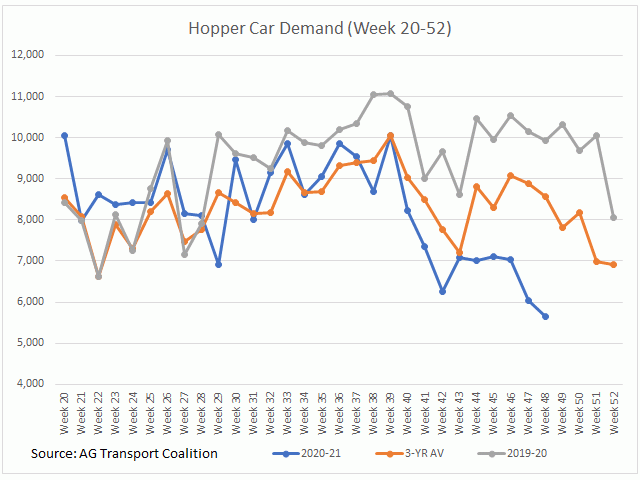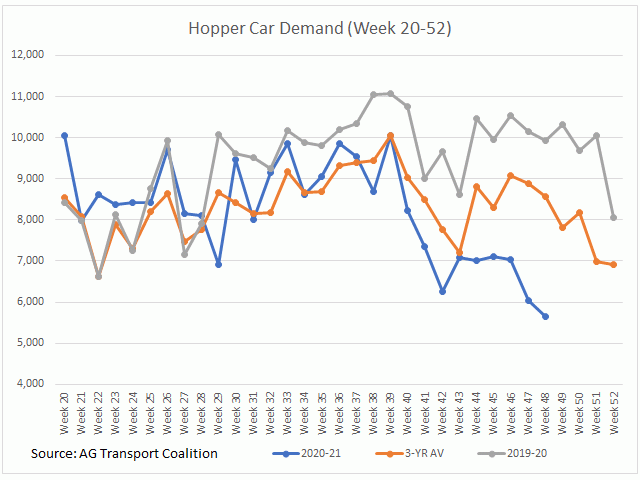Canada Markets
Canada's Rail Movement to Slow During Fire Season
As of July 13, the province of British Columbia currently has 301 wildfires burning, up 16 in the past two days, as indicated by the B.C. Wildfire Dashboard, which is updated every two hours.
This follows the tragic fire that leveled the town of Lytton in the B.C. interior on June 30, after a record-breaking heat wave that saw the town reach an all-time high temperature for the entire country at 49.6 C (121.28 F). While one ongoing theory has passing trains the source of the fire (both CN and CP run through the community), this is still treated as possible criminal activity and the investigation is ongoing.
Canada's federal government has reacted, first by announcing a 48-hour stop to rail movement in parts of British Columbia which expired at midnight on July 10, and then announcing more permanent measures to start on July 11 and continue to Oct. 31. Canada's Minister of Transport Omar Alghabra stated, "Unprecedented weather conditions in British Columbia continue to pose a serious threat to public safety and railway operations. The Government of Canada remains committed to supporting those affected by the devastating wildfires in British Columbia and will not hesitate to take any safety actions that are necessary to mitigate these risks to public safety and the integrity of railway tracks and infrastructure."
The federal government measures are split between the British Columbia interior and across the country. In the B.C. interior, when fire hazards are rated extreme:
--Railways must increase fire suppression capabilities that will allow for a 60-minute response time to extinguish or control fires or to notify officials.
--The conductor is made responsible to spot and report fires.
--Vegetation control along rail lines must be adopted.
--A minimum of 10 fire detection patrols must be conducted in the high-risk areas every 24 hours.
P[L1] D[0x0] M[300x250] OOP[F] ADUNIT[] T[]
--Both CN and CP must consult with Indigenous groups within the high-risk areas.
Across the country, railways must:
--When fire risk is rated extreme and air temperatures reach 30 to 32 C, speed must be reduced to 25 mph where the allowed speed ranges from 26 to 35 mph and reduced by 10 mph where the allowed speed is 36 mph or greater.
--When fire risk is rated extreme and air temperatures exceed 33 C, speed is reduced to 25 mph where the allowed speed of 26 mph and 50 mph and to 30 mph where the allowed speed is 51 mph or higher.
--Locomotives must be inspected each 15-day period.
--Railways must develop and implement an Interim Extreme Weather Fire Risk Mitigation Plan within 14 days.
--This Risk Mitigation Plan must be communicated with municipal and Indigenous governments.
--A final Extreme Weather Risk Mitigation Plan must be completed within 60 days.
Given this directive, Prairie trains will see movement slowed this week, with the government of Canada's Fire Danger chart showing areas of extreme fire risk danger across areas of all three Prairie provinces as well as central B.C., while this week's highs across all four provinces will reach above the 33 C limit.
The AG Transport Coalition's Daily Network Status as of July 12 shows some recovery in movement to port positions this week. On July 12, there were 8,455 loads on wheels, up 11% or 809 cars from the previous day. So far in week 50, the daily average number of loads on wheels is reported at 8,050 cars, up 14% from the 7,078 cars reported for the same period in the previous week. This is largely due to a 50% increase in movement within the Vancouver shipping corridor. Close to 75% of the total loads on wheels reported is found in the Vancouver shipping corridor.
The coalition's idle car count remains high at 3,709 hopper cars not moving for 48 or more hours as of July 12, although the current daily average in week 50 is 3,218 cars and is 22% below the 4,146 cars reported for the same period in the previous week. The largest problem remains on CN track, with the mainline down in the B.C. interior due to damage from fires and detours taking place on CP track.
On July 12, there were 664 total unloads at the western ports, which is down 17% from the previous day. So far in week 50, the average number of unloads of 732 cars is up 72% from the same period in the previous week and the West Coast unloads at 462 hopper cars is up 386% from the same period one week ago.
As seen on the attached chart, perhaps one silver lining in the current slowing of movement is a slower demand for shipping. Demand for hopper cars was reported at 5,656 hopper cars in week 48 (blue line), which is down 43% from the same period in 2019-20 and down 34% from the three-year average.
**
DTN 360 Poll
This week's poll question asks which crop you think has the greatest upside price potential over the upcoming crop year. Please feel free to weigh in with your thoughts, with this poll found on the lower-right side of your DTN Home Page.
Cliff Jamieson can be reached at cliff.jamieson@dtn.com
Follow him on Twitter @Cliff Jamieson
(c) Copyright 2021 DTN, LLC. All rights reserved.






Comments
To comment, please Log In or Join our Community .